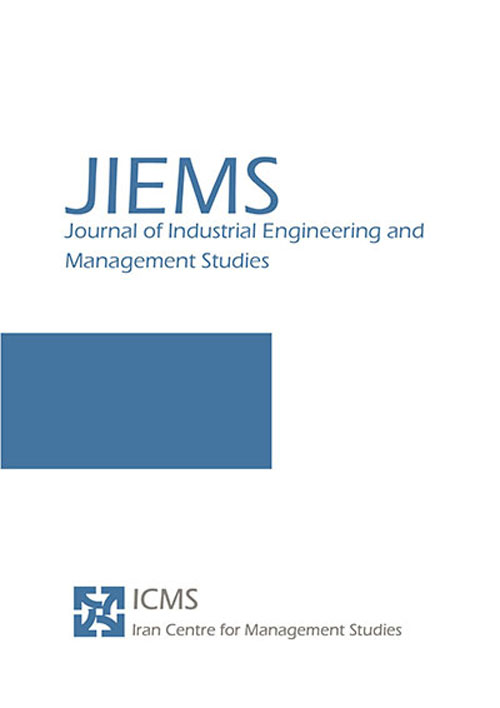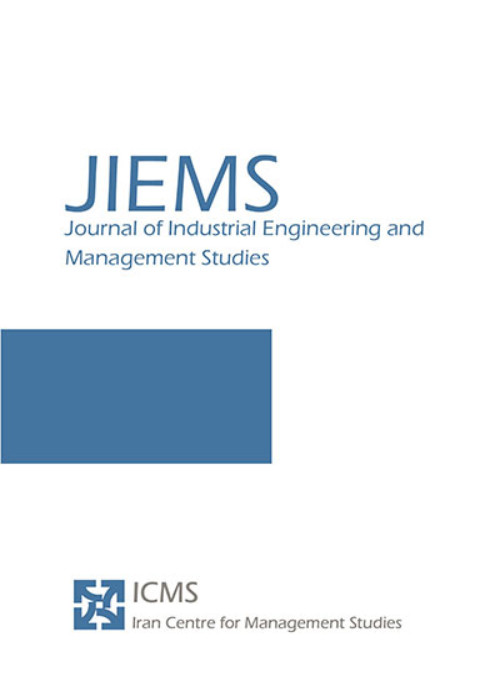فهرست مطالب

Journal of Industrial Engineering and Management Studies
Volume:5 Issue: 2, Summer-Autumn 2018
- تاریخ انتشار: 1397/09/03
- تعداد عناوین: 6
-
-
Pages 1-12Credit risk management is a process in which banks estimate probability of default (PD) for each loan applicant. Data sets of previous loan applicants are built by gathering their data, and these internal data sets are usually completed using external credit bureau’s data and finally used for estimating PD in banks. There is also a continuous interest for bank to use rule based classifiers to build their default prediction models. However, in practice the data records are usually incomplete and have some missing values and this make problems for banks, especially in credit risk portfolios which are low default and makes model rule based building complex. Several strategies could be used in order to handle the missing data issue. This paper used five missing value handling strategies including; ignoring, replacing with random, mean, C&R tree induced values and elimination strategies in a real credit scoring dataset. Experimental results show that ignoring strategy consistently outperforms other methods on test data set, and suggest that the CHAID is a useful classifier for handling low default portfolios with missing value.Keywords: Credit Scoring, Banking Industry, Rule extraction, Missing data, Low default portfolio
-
Pages 13-37This paper investigates the Stackelberg equilibrium for pricing and ordering decisions in a multi-channel supply chain. We study a situation where a manufacturer is going to open a direct online channel in addition to n existing traditional retail channels. It is assumed that the manufacturer is the leader and the retailers are the followers. The situation has a hierarchical nature and is formulated as a bi-level programming problem. The upper level problem is a mathematical model dealing with decisions of the manufacturer, while the lower level is a Nash equilibrium model determining the retail prices and order quantities by formulating the competition between the physical retailers. We consider a price-sensitive linear demand model with an additive uncertain part and analyze the optimal decisions for each sales channel. To enable supply chain coordination, we propose a particular revenue-sharing contract. This contract enables the retailers to set pricing and ordering policies that are equivalent to those in an integrated supply chain. Finally, we examine the impact of the model parameters on the equilibrium with a comprehensive numerical study.Keywords: Multi-channel supply chain, Pricing strategy, Supply chain coordination, Stackelberg game
-
Pages 38-60Aggregate production planning (APP) determines the optimal production plan for the medium term planning horizon. The purpose of the APP is effective utilization of existing capacities through facing the fluctuations in demand. Recently, fuzzy approaches have been applied for APP focusing on vague nature of cost parameters. Considering the importance of coping with customer demand in different periods at different and variable rates, in this research, demand is considered fuzzy and the APP decisions modeled through a bi-objective LP model optimizing production and workforce level costs. The APP decisions are taken in two rounds, First The fuzzy model is transformed to a crisp goal programming counterpart and in the second round as the principal contribution of this paper, the APP decisions for rest of the horizon are updated based on actual demand occurred during starting periods. By generating several sample problems and using the Lingo, the validity of the proposed model is shown.Keywords: Aggregate Production Planning, Adaptive planning, Fuzzy goal programming, Lingo Software
-
Pages 61-82Enterprise resources planning (ERP) systems attract many attentions from industry sector because of their ability to facilitate and integrate the enterprise operations. However, many expenses accompany the implementation of these systems and consecutive changes which doing a precise and comprehensive performance evaluation a necessary part of this process. These evaluations should consider operational and technical aspects of ERP systems to reflect the effectiveness of them toward the organization's requirements. In this paper, a two-stage data envelopment analysis model (DEA) is presented in order to evaluate the efficiency of ERP systems in such a way that the operational and the technical aspect are evaluated in the first stage and the second stage of DEM model, respectively. Based on the obtained results the ERP systems’ functionality and customizability to the client processes are the two key features that need to be considered by the providers. Furthermore, the findings of parameter sensitivity analysis of the proposed model provide deep and managerial insights into the further usability improvements of ERP systems.Keywords: Data envelopment analysis, Enterprise resource planning, two-stage DEA, ERP performance evaluation
-
Pages 84-96Automobile hull insurance has attracted much attention due to the high rate of vehicle applications in daily lives. Since purchasing these policies is optional in Iran and their premium rates are set competitively, a competition is formed among the insurance companies for attracting low risk drivers. However, most of the insurers still use comparative rates and pay no or less attention to the factors affecting risk in premium calculations. Considering the importance of fair ratemaking in attracting and maintaining good risks and encouraging bad risks to repent or leave the portfolio, and taking into account the shortcomings of the available databases, this paper focuses on determining and classifying the risk factors affecting premium calculation in automobile hull insurance from the viewpoint of the experts. In this regard, Fuzzy Delphi method is utilized, the factors are classified and the efficiency of the classification is checked by using Confirmatory Factor Analysis (CFA).Keywords: Automobile hull insurance, Risk, Fuzzy Delphi method, Confirmatory Factor Analysis (CFA), Partial Least Squares (PLS)
-
Pages 97-112In this paper, the problem of two-machine flow shop scheduling to minimize total energy costs under time-of-use tariffs is investigated. As the objective function of this study is not a regular measure, allowing intentional idle-time can be advantageous. So this study considers two approaches, one for non-delay version of the problem and the other one for a situation when inserting intentional idle time is permitted. A mixed integer linear programming is formulated to determine the timing of jobs in order to minimize total energy costs while idle time insertion is allowed. For the non-delay version of the problem, a branch-and-bound algorithm is presented. A lower bound and several dominance properties are used to increase the speed of the branch-and-bound algorithm. Computational experiments are also given to evaluate the performance of the algorithm. Based on results, the proposed algorithms can optimally schedule jobs in small size samples but by increasing the number of jobs from 15 and cost periods from 3, the performance of branch-and-bound has been decreased.Keywords: Flow shop scheduling, mixed integer programming, branch-and-bound, time-of-use energy costs, idle time insertion


